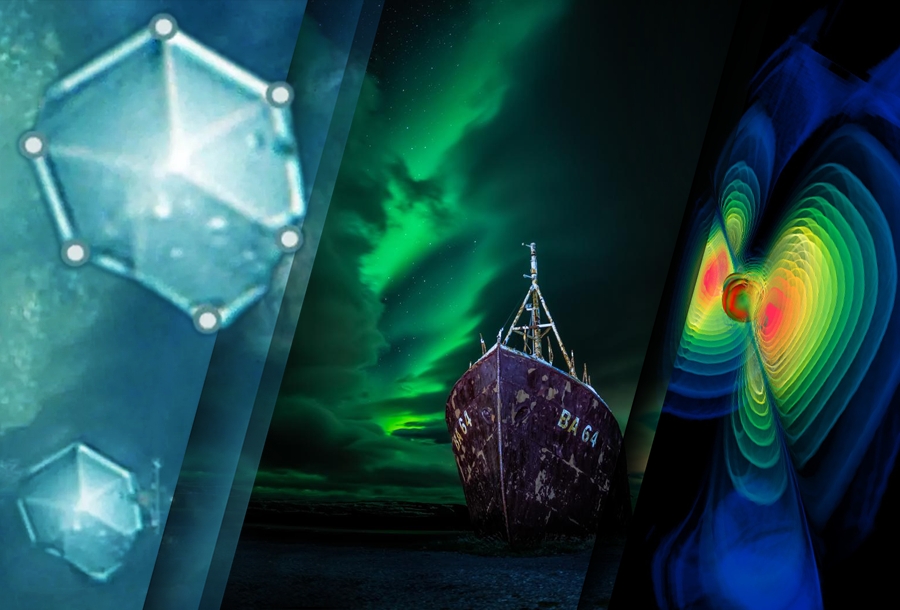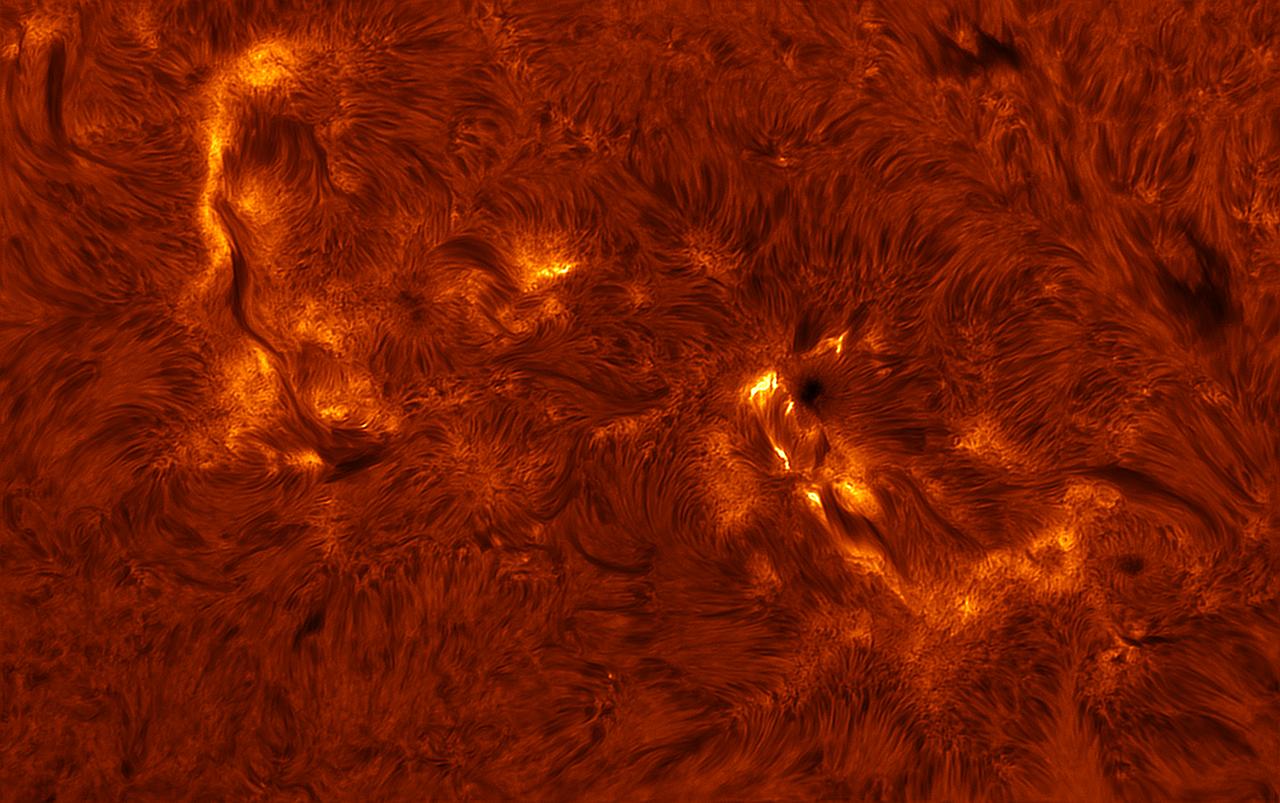Selection of the most interesting space news for breakfast: Australia has made the first commercial flight on its “vomit comet”. The Greenwich Royal Observatory has published the shortlist of the Astronomy Photographer of the Year 2022 competition, and scientists have found previously unseen crystals in meteorite dust.

Australia made a flight on its own “vomit comet”
On June 18, a two-seater SIAI-Marchetti S.211 jet took off from Essendon Fields Airport in Melbourne. Pilot took the jet on Australia’s first commercial “parabolic flight,” in which the plane flies along the path of a freely falling object, creating a short period of weightlessness for everyone and everything inside. Next to him on the passenger seat was a case with experimental samples. With this experiment, scientists are investigating the effect of weightlessness on plant growth, crystal growth, heat transfer, particle agglomeration, foaming and magnetism. As Australia’s space program begins to gain momentum, such flights will be in great demand.
LIGO resumes work in 2023
Following two years of upgrades, the Laser Interferometer Gravitational-Wave Observatory (LIGO) is almost ready for its next operating run, which is set to begin in March 2023.
During this fourth operating run (O4) LIGO — which comprises two detectors, one in Washington and one in Louisiana — will be joined by two other gravitational wave observatories: the Virgo interferometer, in Italy, and the Kamioka Gravitational Wave Detector (KAGRA), in Japan. New improvements to LIGO increase its sensitivity, allowing it to detect weaker signals than ever before, and as a result, track more events than was previously possible.
Flags on the ISS, July 4
The USA celebrates Independence Day on July 4. The American astronauts appealed to their citizens on this score. Bob Hines and Kjell Lindgren recorded a short message for their fellow citizens, in which they wished them a merry holiday. In response, the Russian cosmonauts congratulated the so-called “LPR” on their “liberation”, which caused another scandal. The Russian cosmonauts decided to perform, holding flags in their hands. However, these flags were not American, but belonged to the so-called Lugansk and Donetsk People’s Republics. And they welcomed not their long-term partners in space activities, but a group of bandits who had established terrorist regimes on the territory of Ukraine.
Market News
Earth orbit, Moon, Mars: ESA’s ambitious roadmap
In a bold vision to secure Europe’s role in space exploration and so benefit from the many scientific, economic, and societal rewards, ESA is publicly releasing its new exploration roadmap after its presentation to its Council, the agency’s highest ruling body. Called Terrae Novae 2030+ (Latin for new worlds), the document lays the groundwork for Europe to ensure its leading role in space exploration for future prosperity.
“This new long-term roadmap for exploration is now available to guide decision-makers who will ultimately make the choices on how far to take Europe on the journey of deep-space exploration,” says ESA’s director of Human and Robotic Exploration, David Parker.
Vega-C set for inaugural launch
The first launch of the Vega-C launch vehicle is scheduled for July 13 from the Kourou cosmodrome in French Guiana. The VV21 mission starts a week later than planned due to favorable flight conditions.
Vega-C is a new version of the Vega light class rocket, which has been in use since 2012. The new rocket is 35 m high (5 m higher than the previous version) it is capable of putting about 2.2 tons of cargo into a polar orbit with a height of 700 km. It has more power and more flexible configuration options compared to the original version.
Northrop Grumman selects Airbus to supply satellite buses for U.S. military constellation
Northrop Grumman announced it selected Airbus as its satellite bus supplier for the U.S. Space Development Agency’s low Earth orbit constellation.
Northrop Grumman in February won a $692 million contract from SDA. It became one of three companies selected by the Pentagon Space Agency. Under the terms of the contract, Airbus US will supply 42 satellite “bus” platforms, as well as provide support in the assembly, integration and testing of vehicles.
Airbus U.S. Space and Defense, headquartered in Arlington, Virginia, will produce satellite buses for the Transport Layer Tranche 1, a mesh network of small satellites to support military communications, surveillance and tracking of enemy targets. SDA plans to launch Tranche 1 satellites in late 2024.
Kongsberg to acquire majority stake in NanoAvionics
Norwegian company Kongsberg Defence & Aerospace will acquire a majority stake in NanoAvionics in a deal that values the smallsat manufacturer at 65 million euros ($67 million).
Under the terms of the agreement announced July 5, Kongsberg will acquire 77% of NanoAvionics, with the management of NanoAvionics holding the other 23%. AST SpaceMobile, which acquired a 51% stake in NanoAvionics in 2018, will sell its shares.
Interesting

Astronomy Photographer of the Year 2022 shortlist published
Every year, the Greenwich Royal Observatory holds the Astronomy Photographer of the Year competition. It is the largest and most prestigious among astrophotographers in the world. This year, more than 3 thousand works from 67 countries were sent to the competition. Recently, the jury of the competition published a shortlist of photos that entered the final. Here are some of the most impressive works published on the contest website.
Previously unseen crystals found in meteorite dust
Scientists investigating the remains of the Chelyabinsk meteorite found previously unseen crystals in them. They suspect that it is buckminsterfullerene and polyhexacyclooctadecane formed at the time of the explosion of the “space guest”. Researchers of the meteorite that exploded in 2013 over the city of Chelyabinsk discovered a new type of crystals that had not been previously encountered in nature on Earth. They have a microscopic size and are contained in dust thrown into the air during the explosion.
Follow us on Twitter to get the most interesting space news in time
https://twitter.com/ust_magazine

